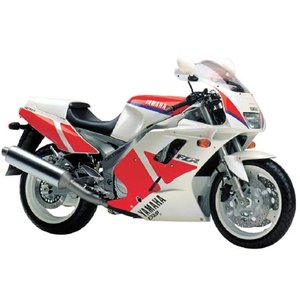Yamaha FZR 1000 EXUP (1991-1993): The Quintessential 1990s Superbike Experience
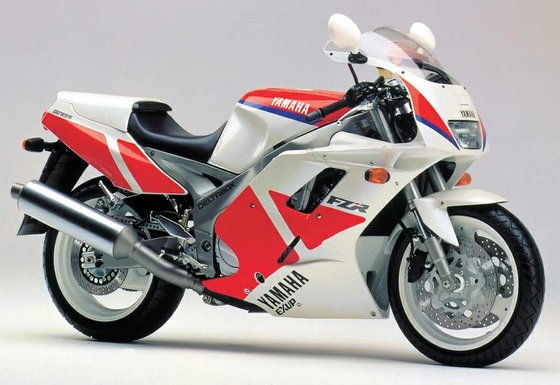
Introduction
When Yamaha unleashed the FZR1000 EXUP in 1989, it redefined the boundaries of production motorcycle engineering. By the 1991-1993 model years, this icon had evolved into a refined yet ferocious machine that still stands as a benchmark for analog-era superbikes. With its race-bred Deltabox frame, revolutionary EXUP exhaust valve, and a 145 HP inline-four engine, the FZR1000 EXUP wasn’t just a motorcycle—it was a statement. Riding this machine today feels like stepping into a time capsule where raw mechanical emotion meets surprisingly modern chassis dynamics. Let’s dissect why this Yamaha remains a legend.
Design & Ergonomics: Form Follows Fury
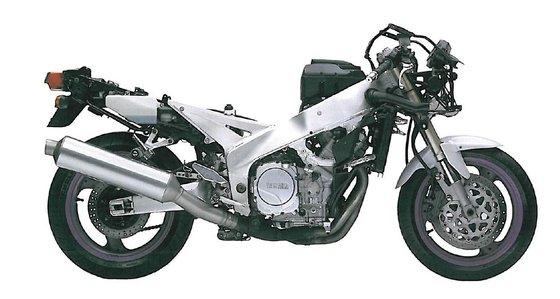
The FZR1000’s aesthetics scream late-’80s ambition. The 1991-1993 models feature a single headlight (replacing the dual units of earlier years) flanked by angular fairings that manage to look both aggressive and dated in the best way possible. At 2,200 mm (86.8 inches) long with a 1,460 mm (57.5-inch) wheelbase, it’s substantial but not bloated. The 765 mm (30.1-inch) seat height accommodates most riders, though the narrow perch reminds you this is a sportbike first.
The riding position is a fascinating compromise. Clip-ons sit lower than modern bikes but higher than full-race replicas, creating a slight forward lean. The tank’s broad shape locks knees in place during hard acceleration, while the passenger seat exists purely for legal compliance. At 236 kg (520 lbs) wet, it’s no featherweight, but the 35° forward-inclined engine placement centralizes mass impressively.
Engine & Performance: The EXUP Revolution
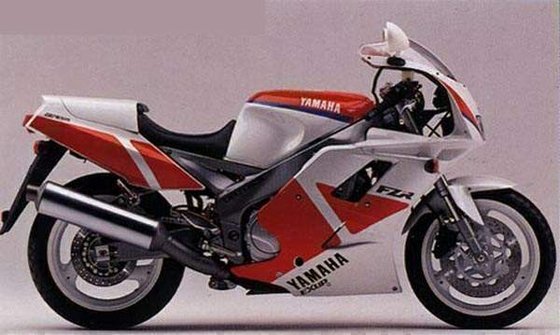
The Heart of the Beast
Yamaha’s 1002cc DOHC inline-four isn’t just powerful—it’s clever. The five-valve-per-cylinder design (three intake, two exhaust) combined with Mikuni 38mm carburetors creates an engine that’s both savage and sophisticated. Peak outputs of 145 HP @ 10,000 RPM and 107 Nm (78.8 lb-ft) @ 8,500 RPM tell only half the story.
EXUP: The Game-Changer
The Exhaust Ultimate Power Valve (EXUP) remains this bike’s party trick. This servo-controlled exhaust valve modulates backpressure, acting like a variable-length exhaust system. Below 7,000 RPM, it closes to boost midrange torque. Above that threshold, it swings open like a drag racer’s cutout, letting the engine breathe freely. The result? A powerband that pulls hard from 4,000 RPM all the way to the 10,500 RPM redline without the traditional inline-four flat spots.
Riding the Wave
Twist the throttle, and the FZR transforms. Below 6,000 RPM, it’s tractable enough for city traffic. Cross 7,000 RPM, and the EXUP’s servo whirs as the valve opens, unleashing a tsunami of acceleration. The 0-100 km/h (0-62 mph) sprint takes 2.9 seconds—a figure that humbles many modern bikes. Keep the hammer down, and you’ll see 273 km/h (170 mph) on the clock, though the windblast at that speed makes you grateful for the tiny fairing.
Handling & Dynamics: Deltabox Sorcery
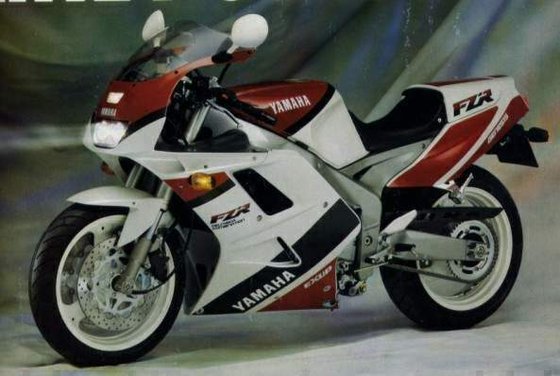
Chassis Brilliance
The Deltabox II aluminum frame wasn’t just stiff—it was visionary. Borrowed from Yamaha’s 500cc Grand Prix bikes, this twin-spar design uses the engine as a stressed member, achieving remarkable rigidity. Paired with 43mm conventional forks (USD units on 1991’s RU model) and a rising-rate monoshock, the FZR dances through corners with a poise that belies its age.
Road Manners
Push hard into a bend, and the Yamaha communicates through every pore. The 130/60-17 front and 170/60-17 rear tires (narrow by today’s standards) offer sublime feedback. Initial turn-in requires deliberate bar input, but once leaned over, the bike holds its line like a laser. Ground clearance is generous, though the hero blobs touch down earlier than modern sportbikes.
Braking: Period-Correct Brutality
Dual 320mm front discs with four-piston calipers deliver strong stopping power, albeit with wooden lever feel compared to radial masters. The rear 267mm disc is adequate but best reserved for speed scrubbing.
Competition: The 1990s Heavyweight Title Fight

In its era, the FZR1000 EXUP faced formidable rivals:
- Suzuki GSX-R1100 (1991-1993)
- Pros: Oil-cooled 1,127cc engine with earth-moving midrange (86.4 mph in top-gear roll-ons vs FZR’s 84.3 mph).
-
Cons: Heavier steering, vague chassis feedback.
-
Honda CBR1000F
- Pros: Velvety smooth power delivery, superior comfort.
-
Cons: 25 HP deficit, softer suspension.
-
Kawasaki ZX-10
- Pros: Brutal top-end power, aggressive styling.
- Cons: Harsh low-RPM manners, cramped ergonomics.
The Verdict
While the GSX-R1100 matched the Yamaha’s straight-line speed (10.58s @ 130.2 mph vs FZR’s 10.54s @ 131 mph), the FZR dominated twistier circuits. In a 1991 Motorcyclist comparison, the Yamaha lapped Willow Springs Raceway 0.7 seconds faster than the Suzuki thanks to its telepathic chassis.
Maintenance: Keeping the Legend Alive
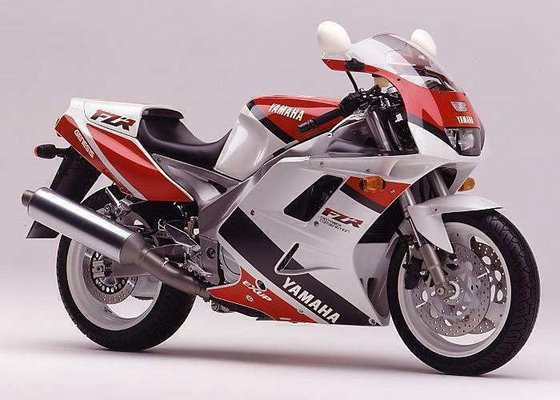
Critical Service Points
1. EXUP Valve
- Clean every 8,000 km (5,000 miles) to prevent carbon buildup. Use MOTOPARTS.store’s EXUP-specific cleaner (PN: MPE-1002).
- Valve Adjustments
-
Check every 12,000 km (7,500 miles). Specs:
- Intake: 0.11-0.20 mm (0.004-0.008 in)
- Exhaust: 0.21-0.30 mm (0.008-0.012 in)
-
Carb Tuning
- Sync every 10,000 km (6,200 miles). Stock settings:
- Pilot screw: 2.5 turns out
- Float height: 14.5 mm (0.57 in)
Upgrade Recommendations
- Brakes: Swap pads to MOTOPARTS.store’s sintered compound (PN: MPB-320FZR).
- Suspension: Retrofit cartridge emulators (PN: MPS-43FZR) for modern damping control.
- Chain Kit: Upgrade to 525 X-ring chain with 17/47 sprockets (PN: MPC-525FZR).
Fluid Specs
- Engine oil: 3.0L of SAE 20W-40 (MOTOPARTS.store PN: MPO-20W40)
- Coolant: Ethylene glycol (2.8L capacity)
- Brake fluid: DOT4
Conclusion: Timeless Thrills
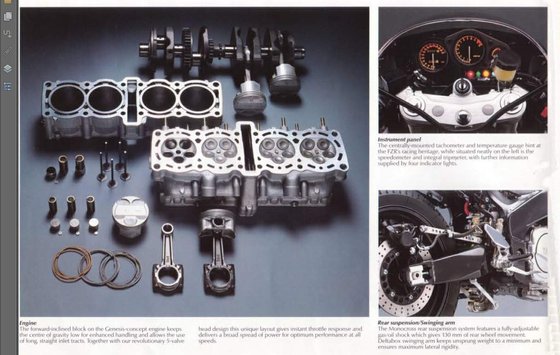
The 1991-1993 FZR1000 EXUP isn’t just a motorcycle—it’s a masterclass in balancing brute force with engineering finesse. While modern electronics have made 145 HP seem tame, few bikes deliver their power with this much character. The chassis remains shockingly capable, urging you to chase apexes with analog precision. For riders who value mechanical theater and timeless design, this Yamaha is more than a classic—it’s a rite of passage.
Whether you’re restoring one or riding it hard, MOTOPARTS.store has the OEM-spec and upgrade components to keep your EXUP singing its glorious, carbureted anthem. Now, go twist that throttle and let the ’90s roar.
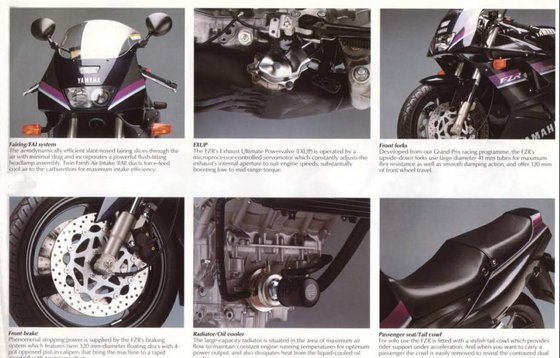


Specifications sheet
| Engine | |
|---|---|
| Stroke: | Four-stroke |
| Ignition: | TCI digital ignition |
| Max power: | 106 kW | 142.0 hp |
| Max torque: | 107 Nm |
| Fuel system: | 4x 38mm Mikuni BDST carburetors |
| Max power @: | 10000 rpm |
| Displacement: | 1002 ccm |
| Max torque @: | 8500 rpm |
| Bore x Stroke: | 75.5 x 56 mm |
| Configuration: | Inline |
| Cooling system: | Liquid cooled |
| Compression ratio: | 12.0:1 |
| Number of cylinders: | 4 |
| Dimensions | |
|---|---|
| Wheelbase: | 1460 mm (57.5 in) |
| Dry weight: | 209 |
| Wet weight: | 236 |
| Seat height: | 765 mm (30.1 in) |
| Overall width: | 730 mm (28.7 in) |
| Overall height: | 1160 mm (45.7 in) |
| Overall length: | 2200 mm (86.8 in) |
| Ground clearance: | 135 mm (5.3 in) |
| Fuel tank capacity: | 19 L (5.02 US gal) |
| Drivetrain | |
|---|---|
| Clutch: | Wet multi-disc |
| Final drive: | chain |
| Chain length: | 110 |
| Transmission: | 5-speed |
| Rear sprocket: | 47 |
| Front sprocket: | 17 |
| Primary reduction ratio: | 1.659 |
| Maintenance | |
|---|---|
| Rear tire: | 170/60 v-17 |
| Engine oil: | 20W40 |
| Front tire: | 130/60 v-17 |
| Brake fluid: | DOT 4 |
| Spark plugs: | NGK DR8ES-L or NGK DR8EIX |
| Spark plug gap: | 0.7 |
| Chain free play: | 15–20 mm (0.6–0.8 in) |
| Coolant capacity: | 2.8 |
| Engine oil capacity: | 3.0 |
| Valve clearance (intake, cold): | 0.11–0.20 mm |
| Valve clearance check interval: | 24,000 km (15,000 mi) |
| Valve clearance (exhaust, cold): | 0.21–0.30 mm |
| Recommended tire pressure (rear): | 2.6 bar (38 psi) solo, 2.9 bar (42 psi) with passenger |
| Recommended tire pressure (front): | 2.5 bar (36 psi) |
| Chassis and Suspension | |
|---|---|
| Rake: | 26.7° |
| Frame: | Deltabox aluminum twin-spar |
| Trail: | 110 mm (4.33 in) |
| Rear tire: | 170/60 v-17 |
| Front tire: | 130/60 v-17 |
| Rear brakes: | Single 267 mm disc, 1-piston caliper |
| Front brakes: | Dual 320 mm discs, 4-piston calipers |
| Rear suspension: | Monoshock, adjustable preload and rebound damping |
| Front suspension: | 43mm telescopic fork, adjustable preload |
| Rear wheel travel: | 130 mm (5.1 in) |
| Front wheel travel: | 120 mm (4.7 in) |



